The Officers of the Maginot Forts were sent away to sea with the French Navy; not the surface fleet, but with the submarines. The Maginot Line has often been described as being akin to battleships buried in the ground and when reflecting on the artillery aspect this would indeed be true, although the Line had more in common with a submarine in terms of living conditions.

Space costs money, so there was no unnecessary construction. This resulted in the crews of a Maginot Fort using a system of hot bunking when it came to the tiny matter of sleeping. As we have mentioned elsewhere in this guide, the crews would eat and sleep adjacent to their designated place of duty. Were you to be stationed in, for example, the usine (power plant), then you would have to try to sleep right alongside all the noise and activity of the generators.

Space costs money, so there was no unnecessary construction. This resulted in the crews of a Maginot Fort using a system of hot bunking when it came to the tiny matter of sleeping. As we have mentioned elsewhere in this guide, the crews would eat and sleep adjacent to their designated place of duty. Were you to be stationed in, for example, the usine (power plant), then you would have to try to sleep right alongside all the noise and activity of the generators.
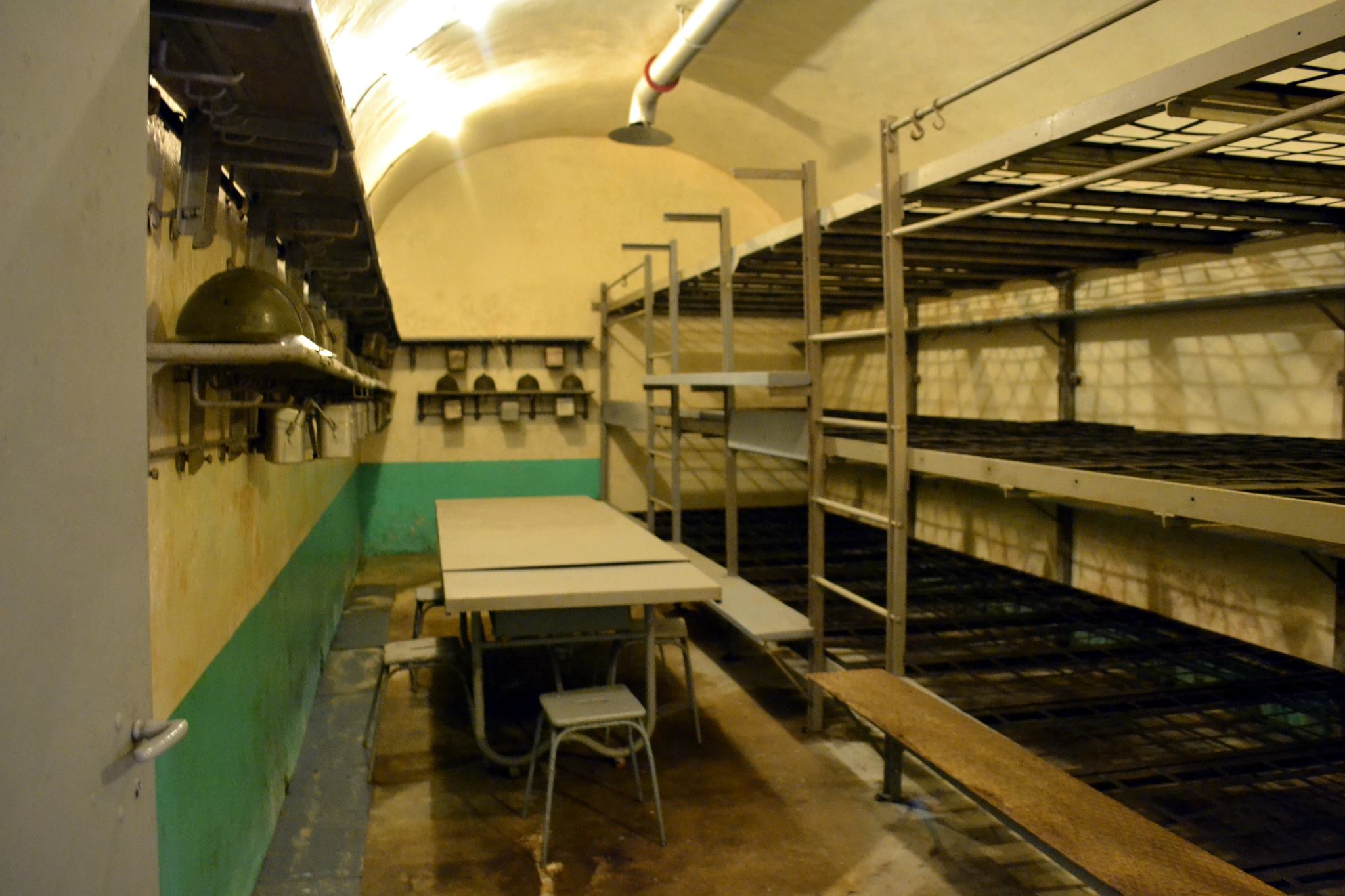
As can be seen from our images here, the barracks were cramped places. Privacy was a concept of imagination, rather than reality. Worse still, due to being located 30 metres below ground, the walls of the barracks would run with moisture created from the exhaled breath, making the individual barrack chambers an extremely unpleasant place to be.

This said, inside the fort you were at least fed three times a day with hot food, relatively safe from enemy attack, provisioned with hot and cold running water and with access to a flushing toilet. These were provided in exchange for strict rules on smoking, no running or strangely, whistling.
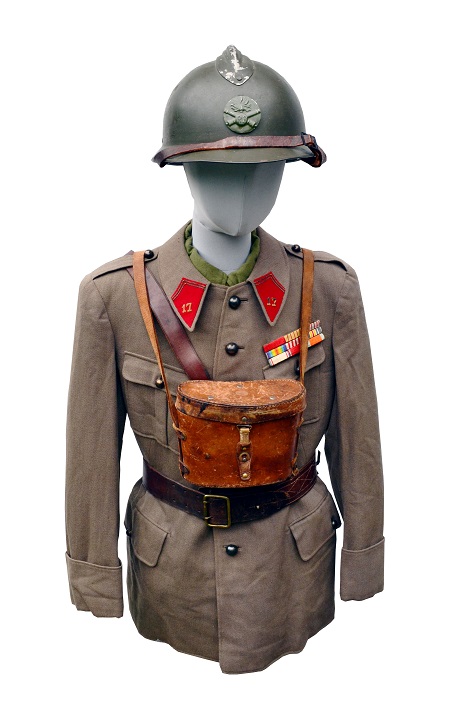
French Officer of the 17th Artillery Regiment. This unit was attached to the 52eme Infantry Division. In May 1940, this division was part of the 4th Army, acting as interval troops along the Maginot Line. The style of tunic (vareuse) is the Modele 29 and the headgear is a standard Adrian 26 helmet, bearing the artillery arms of service, the crossed cannons and blazing grenade badge. The binoculars are standard inter-war/ early war issue Huet 8 x 30.

Maginot crew members' beret badge. The badge was the official standard emblem of the Maginot Line. It depicts a standard combat block with 47 mm retractable antitank gun protruding from an embrasure; atop is a retractable trurret. These are behind a line of barbed wire. The Line's motto 'On Ne Passe Pas' (They Shall Not Pass) to the top of the badge.

Officers' version of the beret badge.
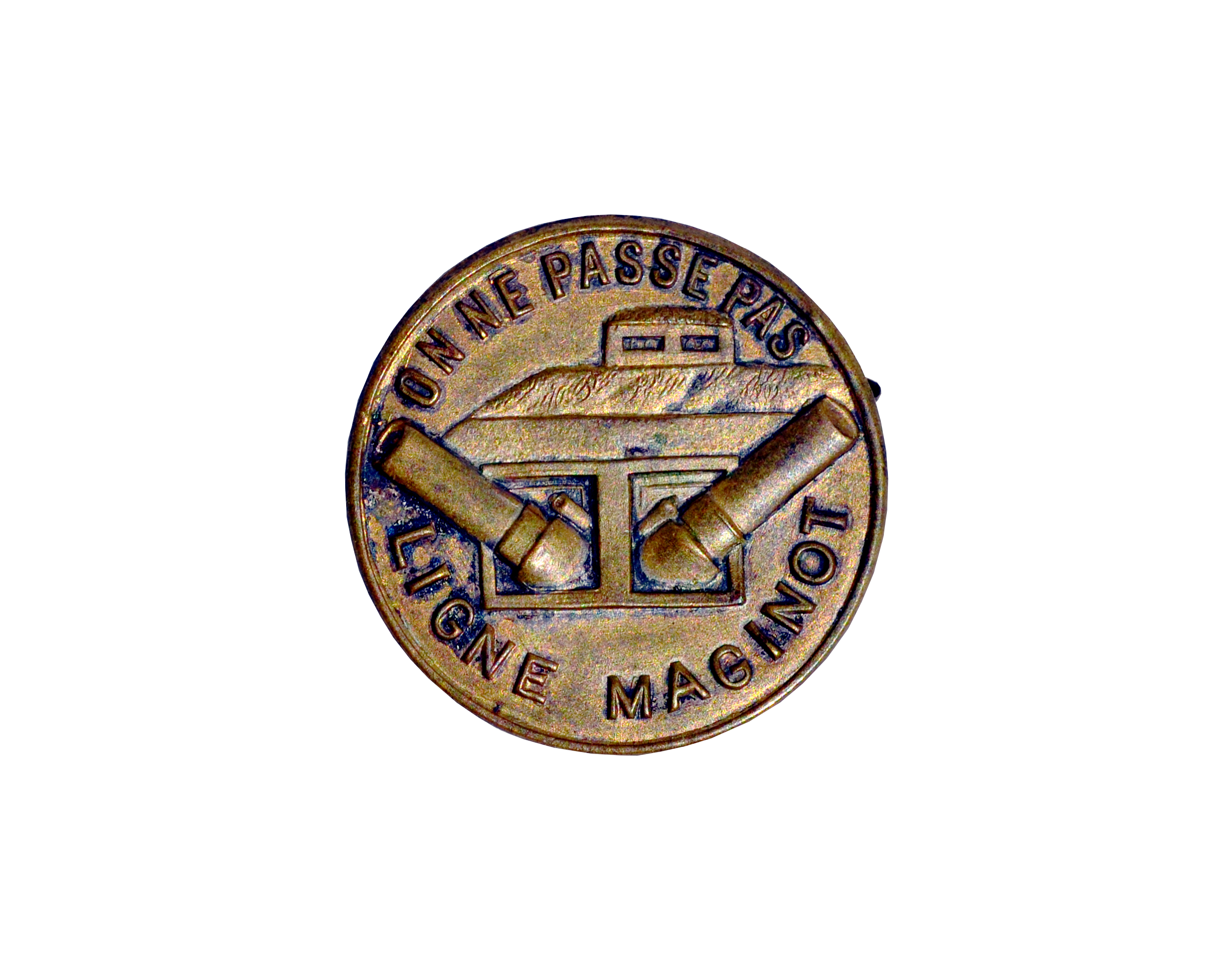
Privately produced Maginot Line badge. Individual forts, as well as fortified sectors produced their own insignia in addition to those issued officially.
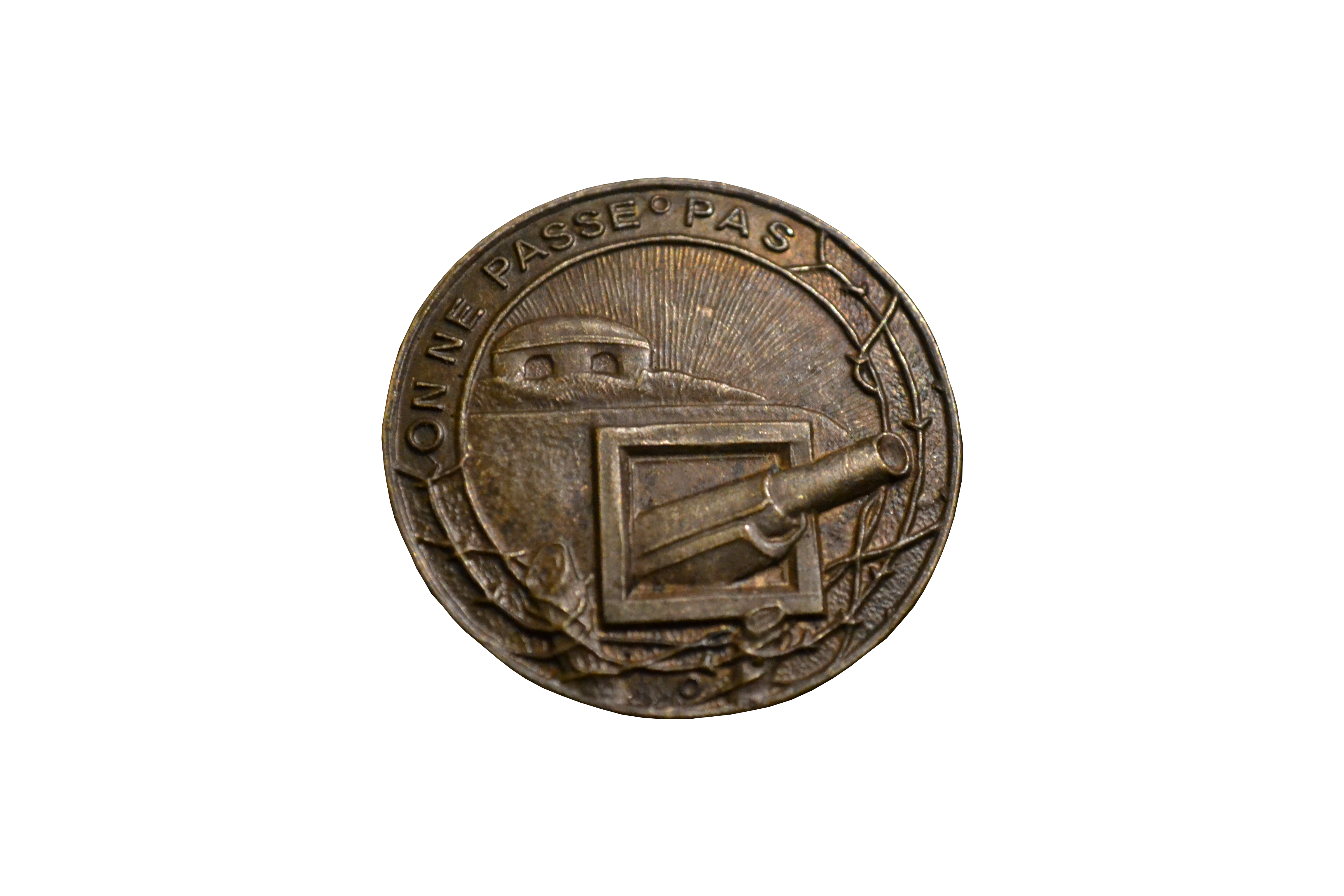
Insignia of the Alpes Maritimes sector of the Maginot Line. These were privately purchased by the crews of the forts in this sector. The standard insignia was also worn.
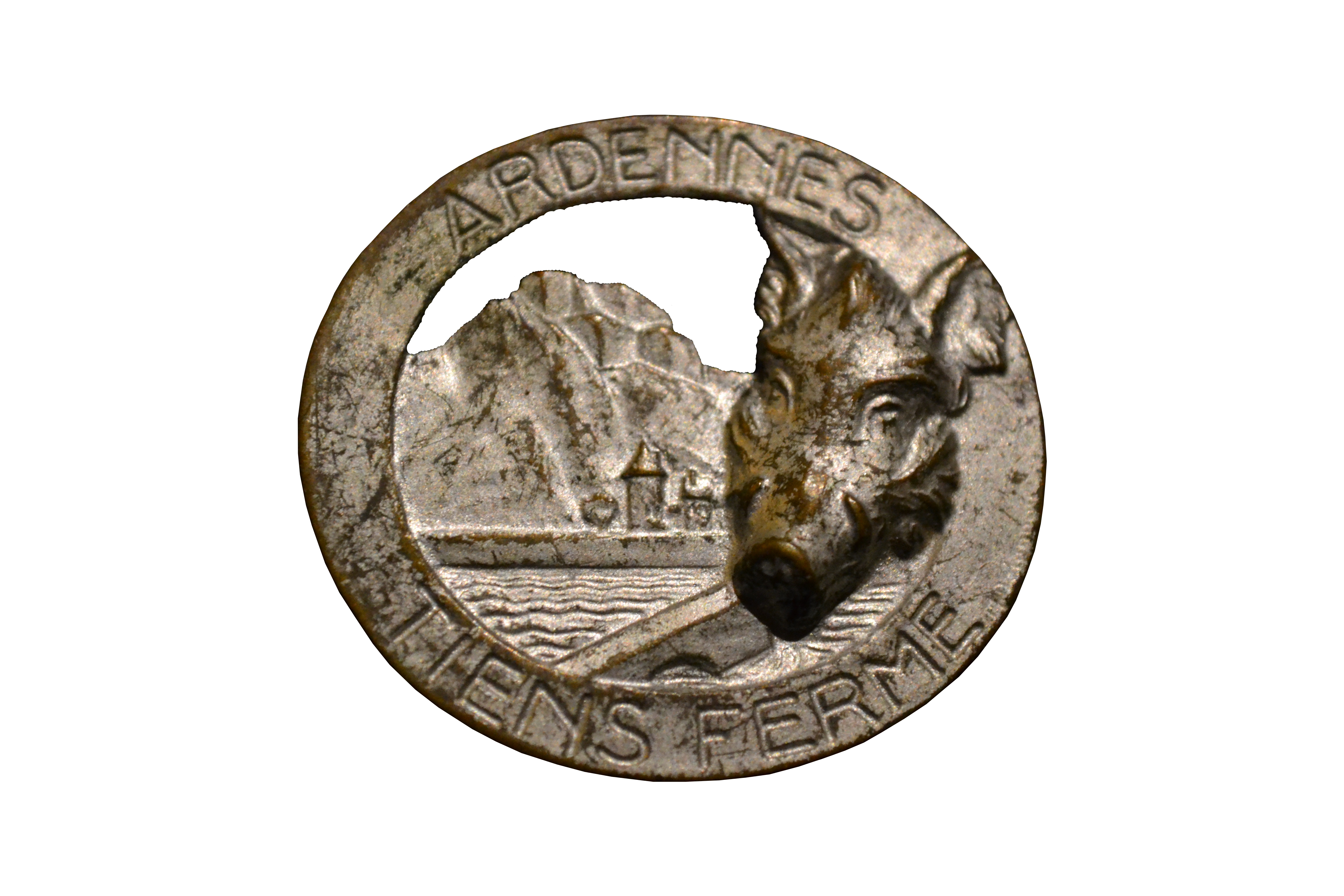
Insignia of the fortified sector of the Ardennes. While this was a recognised fortified sector of the Maginot Line, it consisted of little more than pillboxes. The reason for this was that the frontier directly faced Belgium and the French Government were keen to not give the impression that, in the the event of an attack, the French would abandon the Belgians. Equally, it was considered to not be feasible to operate tanks in the terrain. Ultimately, it was in this sector that the main German attack would take place.
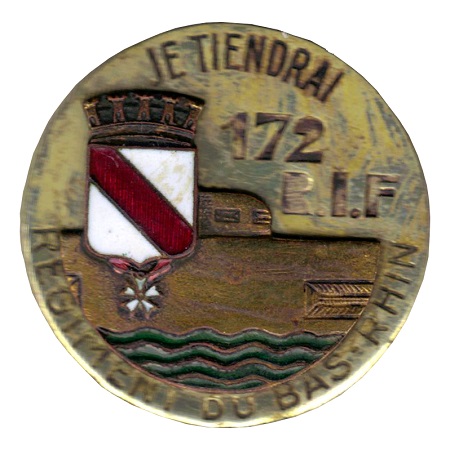
Insignia of the 172 RIF. Along with the standard and fortified sector motifs, the regiments assigned to the Maginot Line produced their own individual badges. The 172 RIF were responsible for crewing the Rhine Barrage casemates (one of which is depicted on the badge) around the city of Strasbourg. "Je Tiendrai", the unit motto, means "I will hold". To learn more about the 172 eme please click here.
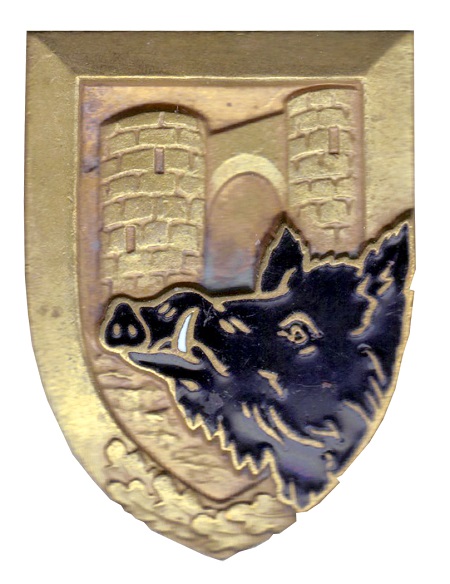
Regimental Insignia of the 174 eme. To learn more about this item please, click here.

Insignia of the Alpes Maritimes sector of the Maginot Line. These were privately purchased by the crews of the forts in this sector. The standard insignia was also worn.

Insignia of the fortified sector of the Ardennes. While this was a recognised fortified sector of the Maginot Line, it consisted of little more than pillboxes. The reason for this was that the frontier directly faced Belgium and the French Government were keen to not give the impression that, in the the event of an attack, the French would abandon the Belgians. Equally, it was considered to not be feasible to operate tanks in the terrain. Ultimately, it was in this sector that the main German attack would take place.

Insignia of the 172 RIF. Along with the standard and fortified sector motifs, the regiments assigned to the Maginot Line produced their own individual badges. The 172 RIF were responsible for crewing the Rhine Barrage casemates (one of which is depicted on the badge) around the city of Strasbourg. "Je Tiendrai", the unit motto, means "I will hold". To learn more about the 172 eme please click here.

Regimental Insignia of the 174 eme. To learn more about this item please, click here.
To read about the individual gas masks used by the troops, click here.
Back
Back
